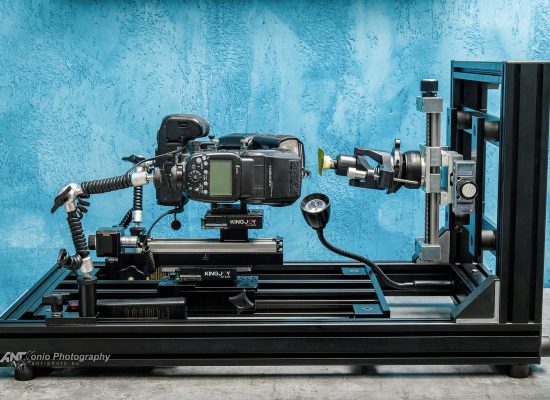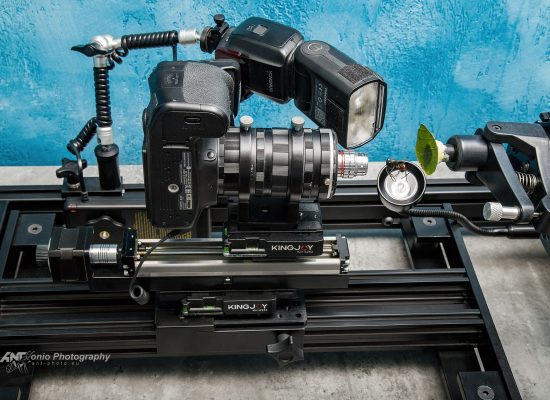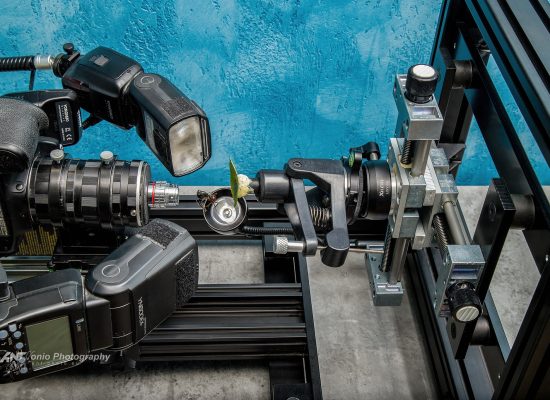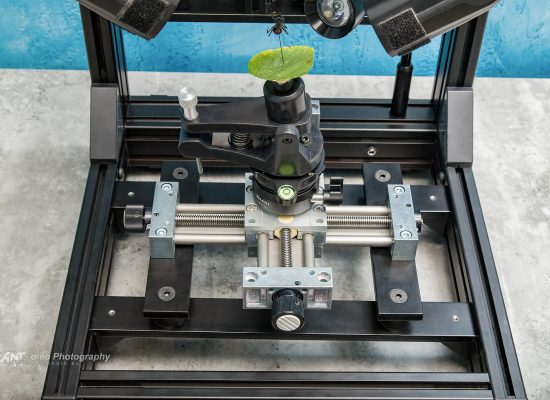Macro photography equipment
Macro photography is a field of photography that allows to explore the fascinating microcosm of the world around us, revealing details invisible to the naked eye. In the case of ant photography, this field becomes an incredibly exciting challenge, requiring specialized equipment, advanced techniques, and above all, patience. In this article, I will showcase my macro photography equipment and discuss topics related to macro lenses, microscopic optics, and focus stacking technique.
Macro photography camera
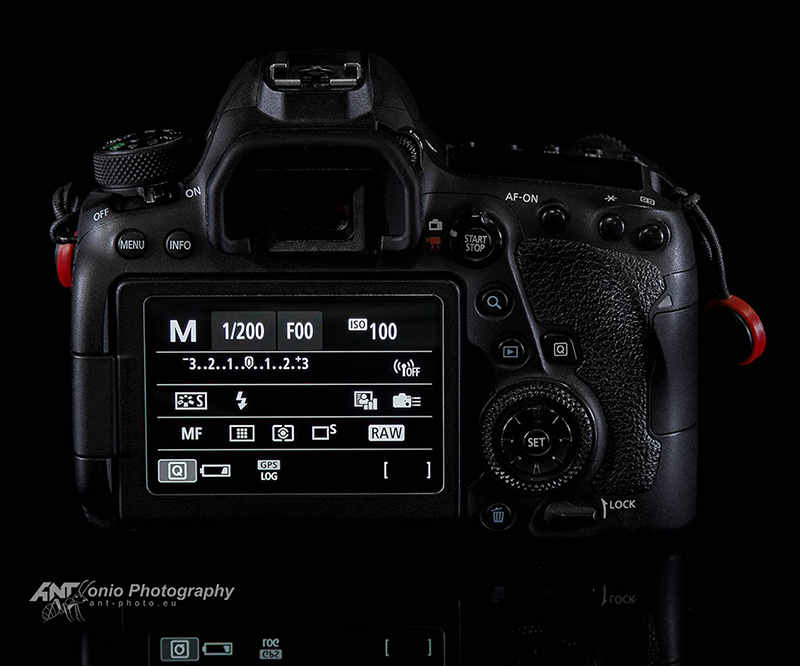 I often hear opinions like, “You must have a really good camera.” However, is the camera actually the most important part in macro photography? In my opinion, the camera takes a back seat, and owning the latest and most expensive model is not necessary to capture great photos. It doesn’t matter whether you choose Canon, Nikon, Sony, or Olympus. The decision regarding the camera model or brand should be tailored to your budget and preferred workflow system. I believe it’s worth investing in the best camera within your means while also allocating funds for essential accessories.
I often hear opinions like, “You must have a really good camera.” However, is the camera actually the most important part in macro photography? In my opinion, the camera takes a back seat, and owning the latest and most expensive model is not necessary to capture great photos. It doesn’t matter whether you choose Canon, Nikon, Sony, or Olympus. The decision regarding the camera model or brand should be tailored to your budget and preferred workflow system. I believe it’s worth investing in the best camera within your means while also allocating funds for essential accessories.
Macro photography lenses
The choice of lens has the most significant impact on the quality of macro photos. Selecting a lens is not easy, and it usually doesn’t end with the purchase of just one lens, as different macro lenses have different applications. I use Canon optics and have chosen three lenses for my work: my primary lens is the Canon MP-E 65mm f/2.8 1-5x Macro Photo, ideal for photographing ants and other small arthropods, providing a magnification range of 1:1 – 5:1. It is specifically designed for this purpose, with its only drawback being its considerable weight of 710 g.
 For photographing larger ants and other bigger arthropods, I use the Canon EF 100mm f/2.8L Macro IS USM lens, which works perfectly in a home studio, and the Canon EF 180mm f/3.5L Macro USM lens is perfect for outdoor photography. Its very long working distance, 1:1 scale, and beautiful background blur are ideal for outdoor settings. All three mentioned macro lenses can be mounted on a tripod, which, in my opinion, is a fantastic solution for outdoor photography.
For photographing larger ants and other bigger arthropods, I use the Canon EF 100mm f/2.8L Macro IS USM lens, which works perfectly in a home studio, and the Canon EF 180mm f/3.5L Macro USM lens is perfect for outdoor photography. Its very long working distance, 1:1 scale, and beautiful background blur are ideal for outdoor settings. All three mentioned macro lenses can be mounted on a tripod, which, in my opinion, is a fantastic solution for outdoor photography.
Microscope lenses for macrophotography
Microscopic lenses offer unique features that make them attractive to extreme macro photography enthusiasts. They provide magnifications unattainable with standard macro lenses, allowing for enormous close-ups of objects. Additionally, microscopic lenses are characterized by high resolution and precision, enabling the capture of even the tiniest details and structures of photographed objects.

Not every microscopic lens is suitable for macro photography, but Nikon M Plan and Mitutoyo M Plan Apo metallurgical lenses are excellent choices. I mainly use the former due to its availability and direct mounting without additional optics. My ant portraits are captured using microscopic lenses.
Assembly of a microscope lens
Using microscopic lenses in extreme macro requires significant effort from the photographer. Special adapters, extension tubes, or additional optics (depending on the type of microscopic lens used) are necessary to mount the microscopic lens to the camera. Ready-made solutions are scarce, and they are neither cheap nor readily available. To address this issue, I created a mount for inexpensive Chinese extension tubes 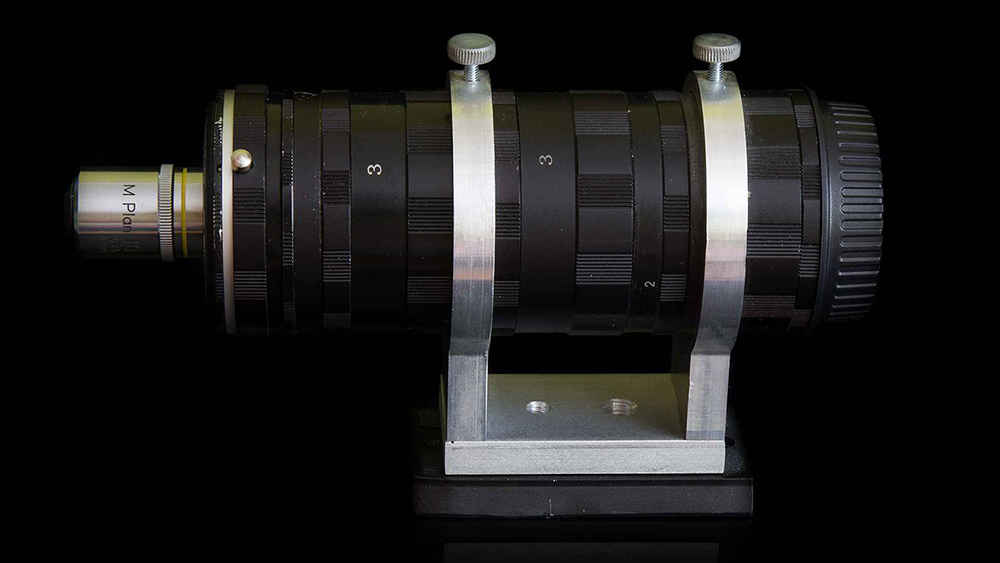 These rings have three main advantages: they are readily available, affordable, and, when screwed together (excluding lens mounts), very stable. With this mount (without extension tubes attached to the camera), I achieved a high rigidity of the entire setup and gained the ability to quickly switch between horizontal and vertical framing.
These rings have three main advantages: they are readily available, affordable, and, when screwed together (excluding lens mounts), very stable. With this mount (without extension tubes attached to the camera), I achieved a high rigidity of the entire setup and gained the ability to quickly switch between horizontal and vertical framing.
Automatic rail for macro photography
For photography with microscopic lenses, a precise macro rail is essential. Microscopic lenses, despite their many advantages, have a significant drawback: very shallow depth of field. The solution is to use a specialized macro rail, allowing for a series of photos with a shift in the focal plane, which can then be merged into a single, perfectly sharp image. Precision and repeatability of steps are crucial at high magnification scales. In 2013, I created my first automatic macro rail, and in 2015, I built the rail I named BlueStack. I still use it today, as do many of my friends for whom I also assembled such a rail. To build it, I used a highly precise guide with a ball screw used in industry. I used a stepper motor as the drive, resulting in a device that is repeatable, precise, and fast. I placed all the electronics inside the rail, eliminating the need for external controllers or unnecessary cables. The entire system is controlled via Bluetooth using a custom Android app. Compact dimensions, high precision, customization options, energy efficiency, and reliability allow me to use this macro rail not only in a home studio but also outdoors, away from civilization.
The entire system is controlled via Bluetooth using a custom Android app. Compact dimensions, high precision, customization options, energy efficiency, and reliability allow me to use this macro rail not only in a home studio but also outdoors, away from civilization.
Table for extreme macrophotography
Now that we have the camera, microscopic lenses, and macro rail, what’s next? It’s time to start taking photos. To make this process more enjoyable and at the same time improve efficiency, I developed a special table for extreme macro photography. This table allows me to precisely position the photographed object in literally every possible axis and set the flashes or camera in the right position. The table’s construction is very stable and refined in every aspect. Several years of work on CNC machines, my passion for tinkering, and continuous improvement of my ideas resulted in a machine that more resembles a 3D printer than a device for taking photos. This is not the first table I’ve made. I started with a simple board with a screwed-on microscope, and the current version is not final either; I plan to create another table with built-in power and electronic measurement of the photographed object.
Focus stacking software
Focus stacking is a technique that involves combining multiple photos taken with a shift in the focal plane into one perfectly sharp image. It is an invaluable tool in macro photography when using microscopic lenses or when capturing a sharp object against a blurred background in outdoor settings. In this technique, we leverage the advantages of our lenses while mitigating their drawbacks, such as shallow depth of field. By photographing the object at the sharpest aperture, we can simultaneously achieve a beautifully blurred background. After assembling the component photos into one, we obtain a sharp image with the desired depth of field.

There are many free and paid programs available for stacking photos. I tested most of them and ultimately chose Zerene Stacker. It is one of the best tools for this purpose. Despite its somewhat slow operation, it is very accurate and allows for easy and precise editing. Unfortunately, it is a paid program, but the license is lifetime, and it is relatively inexpensive considering its capabilities.

